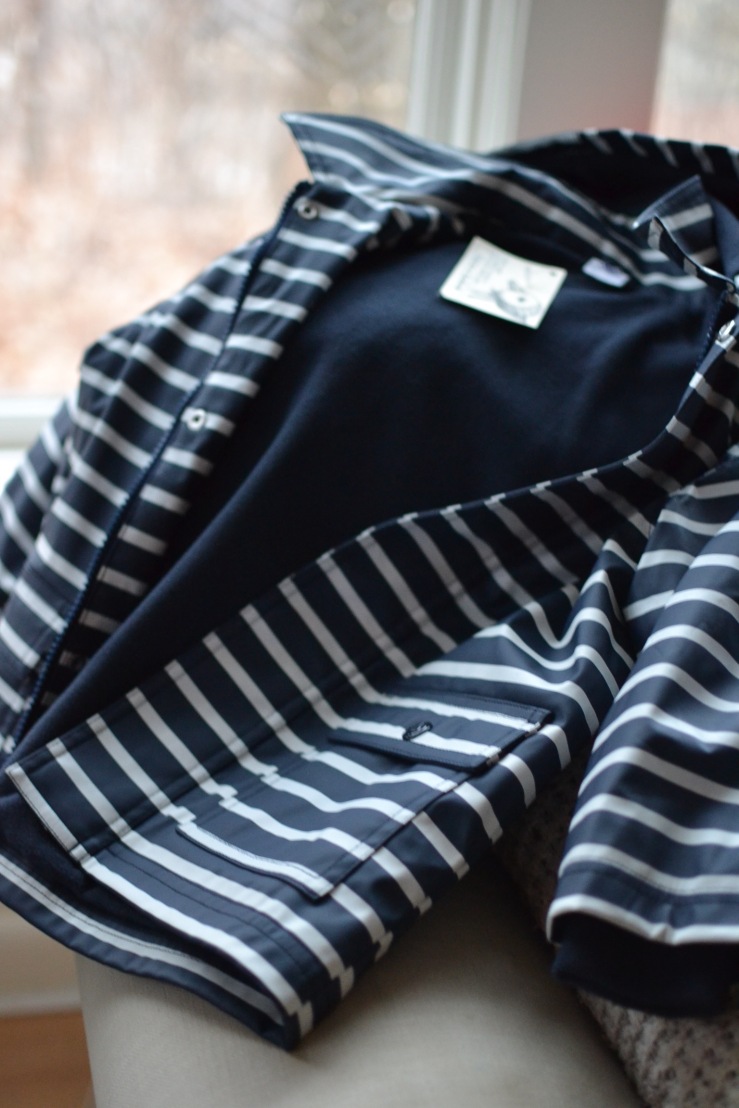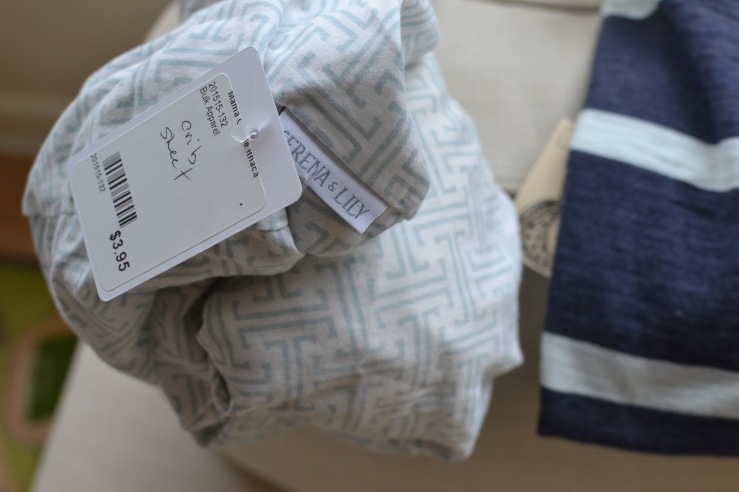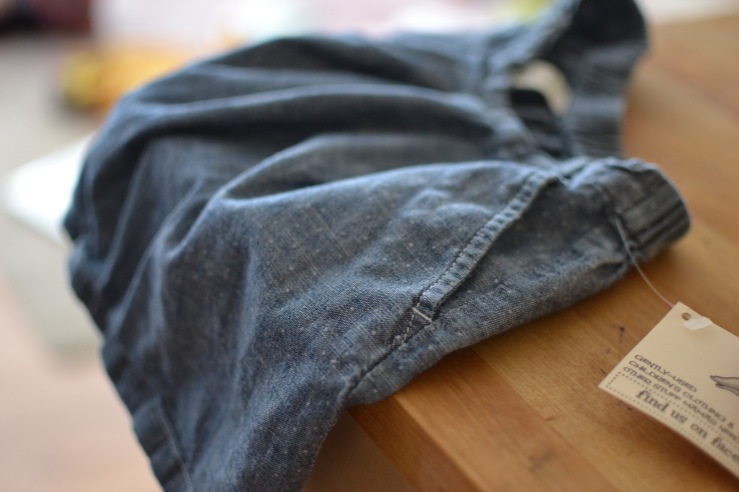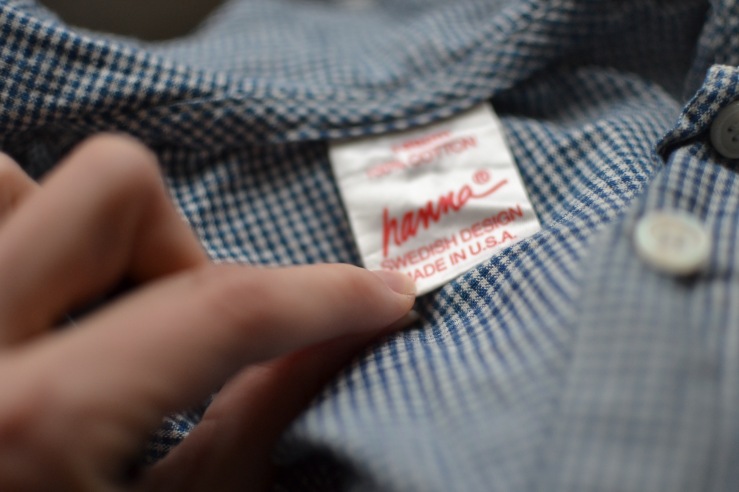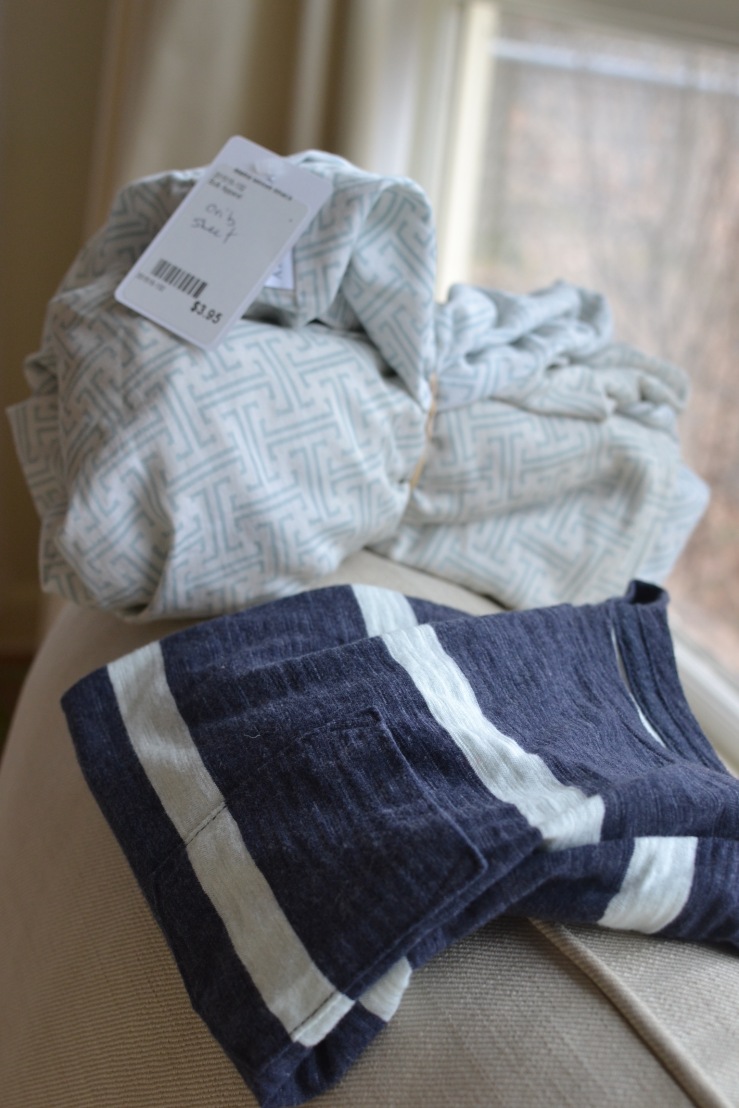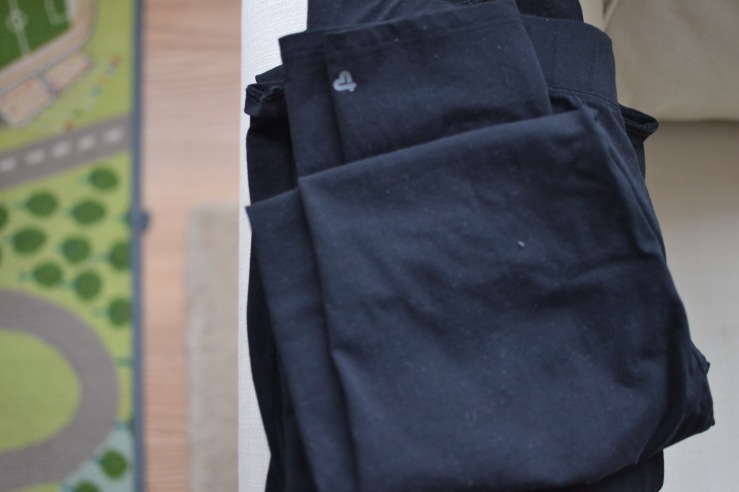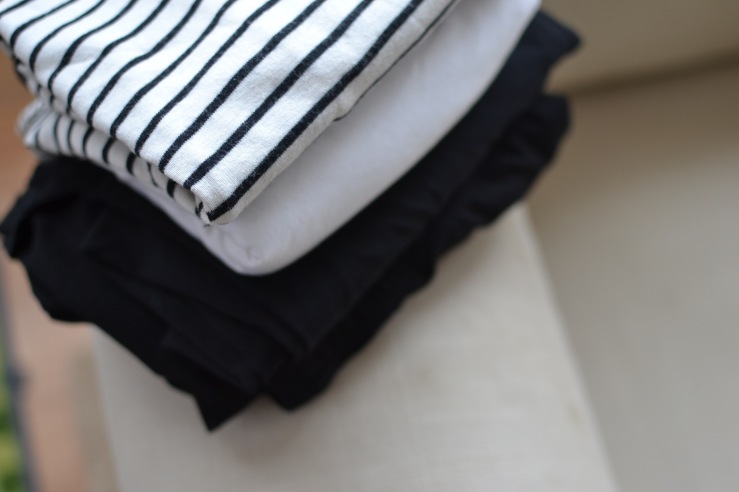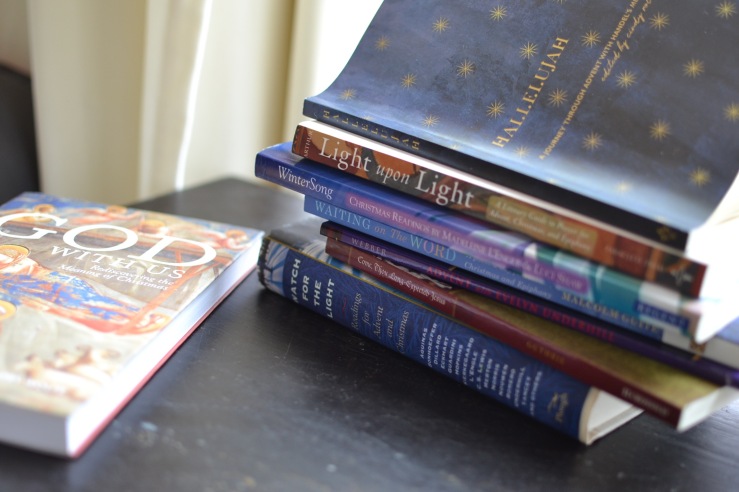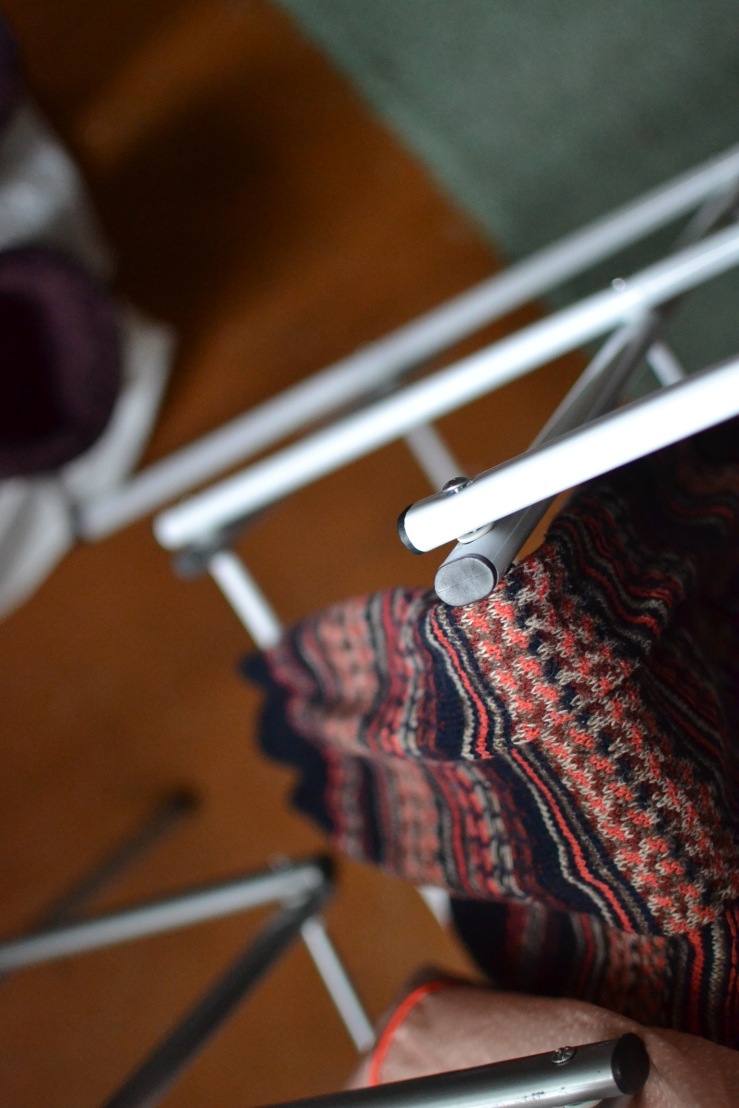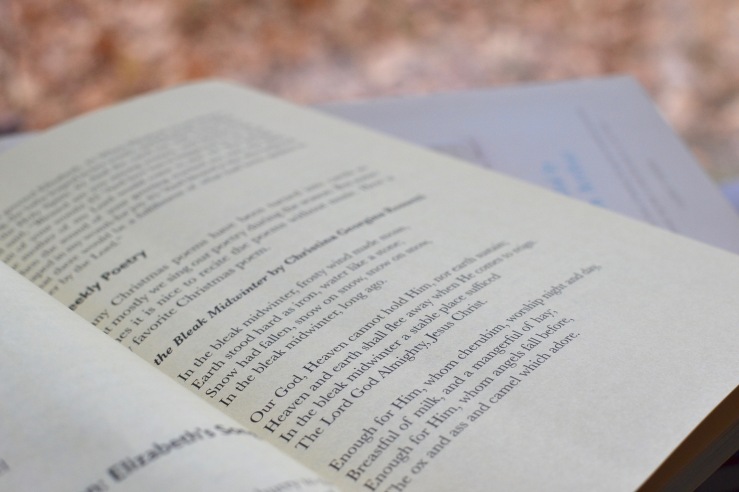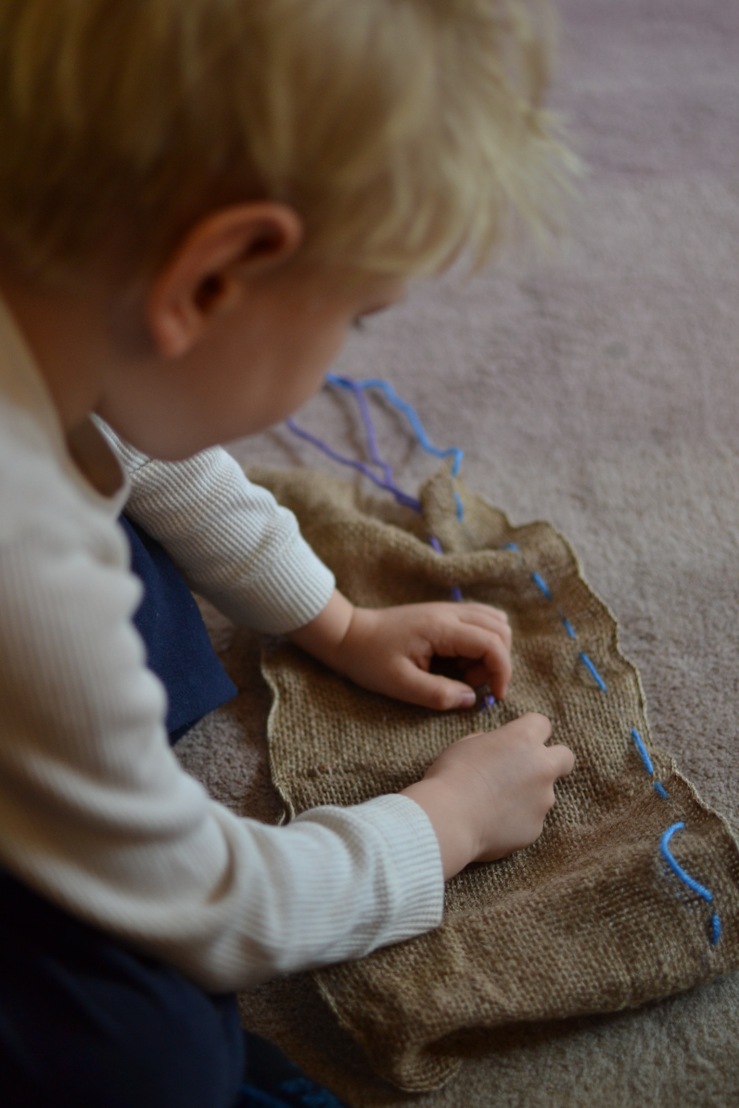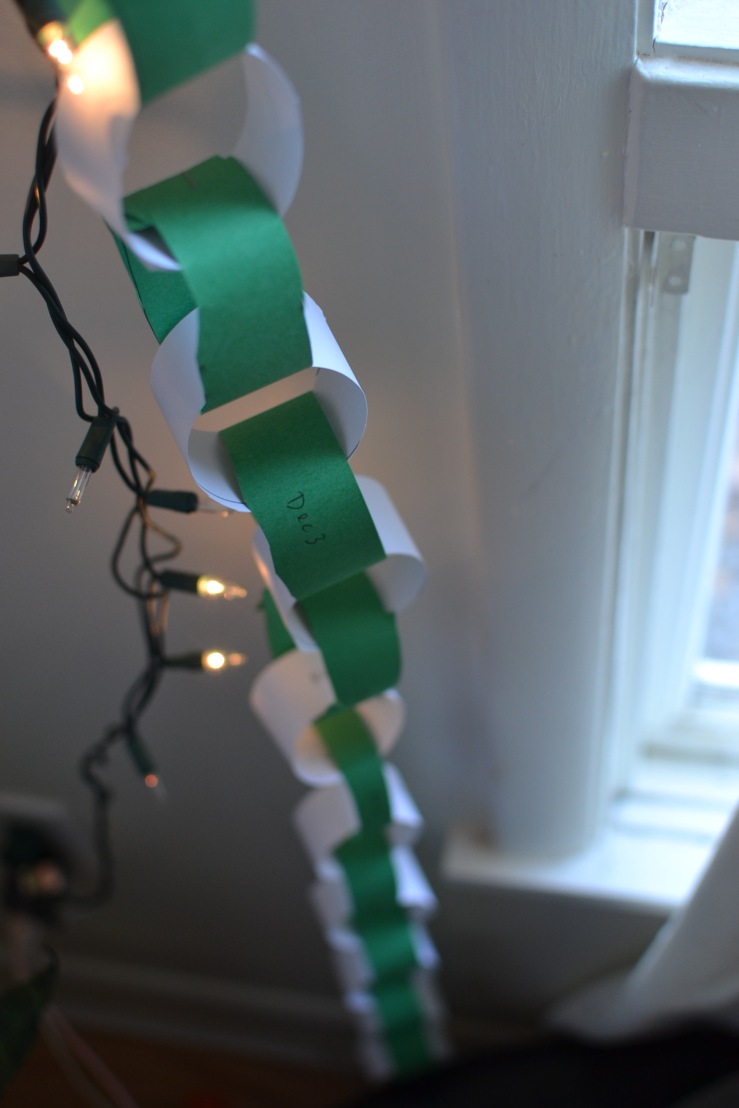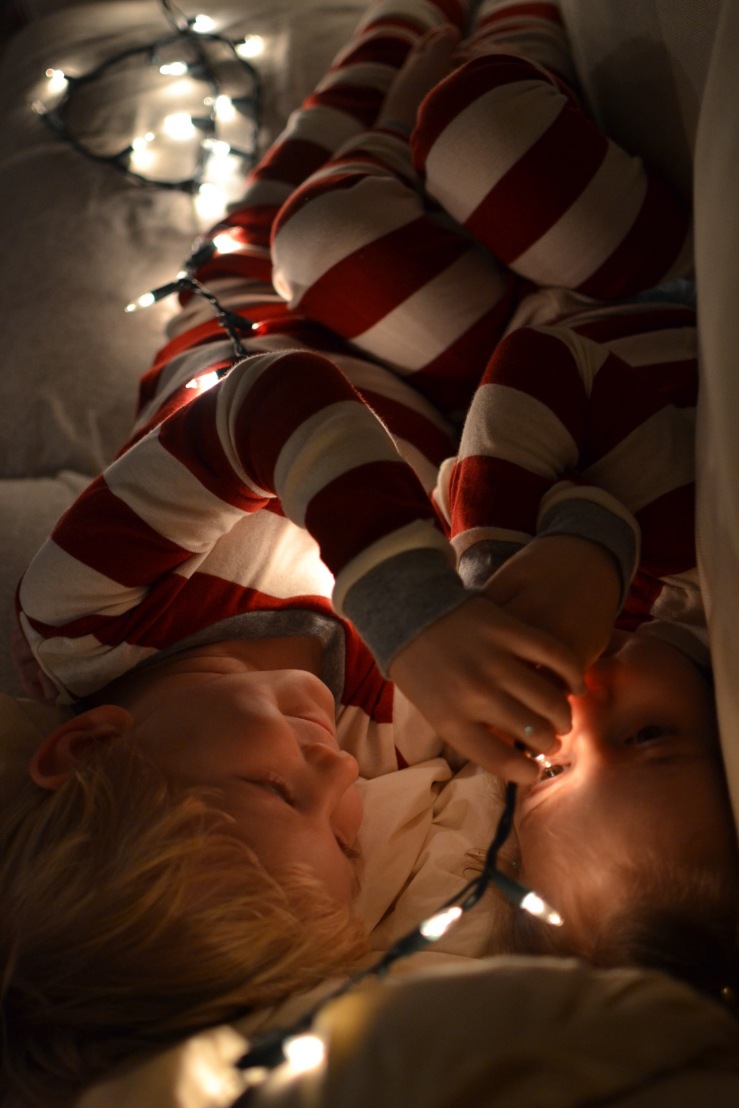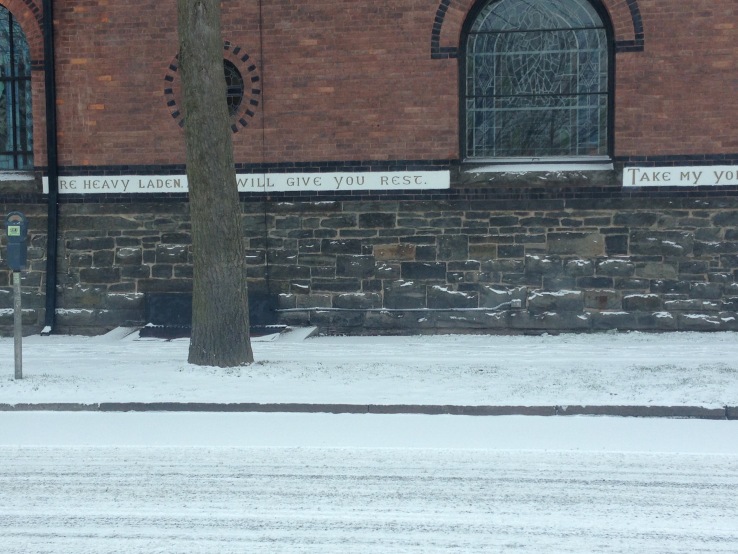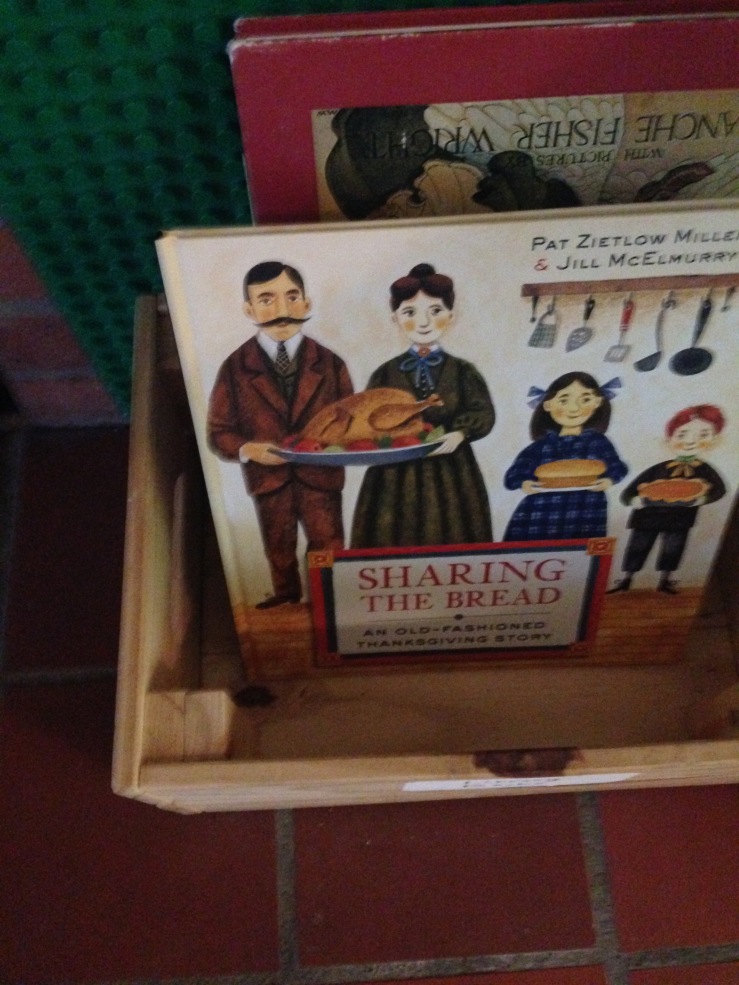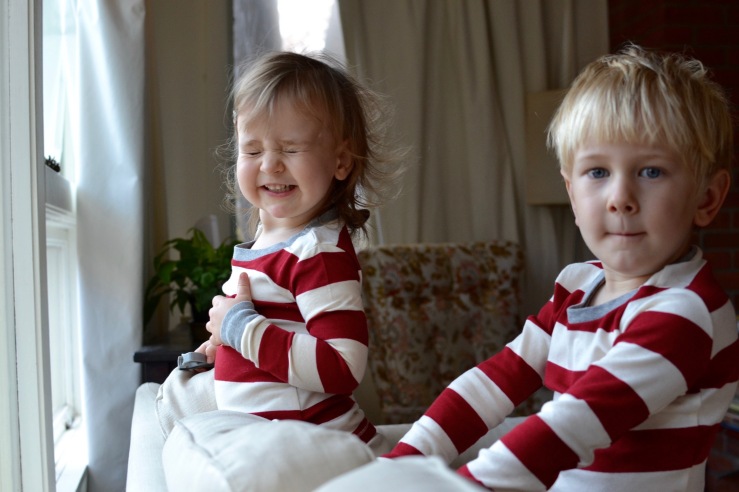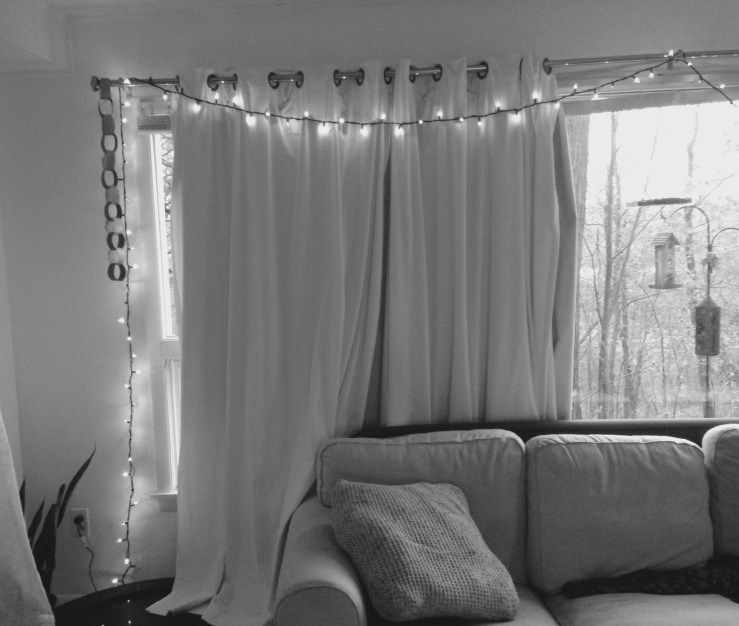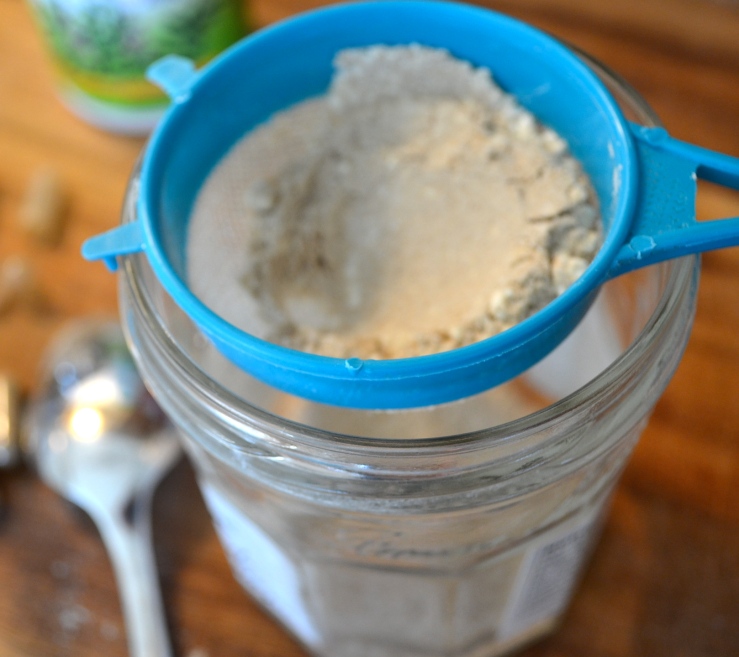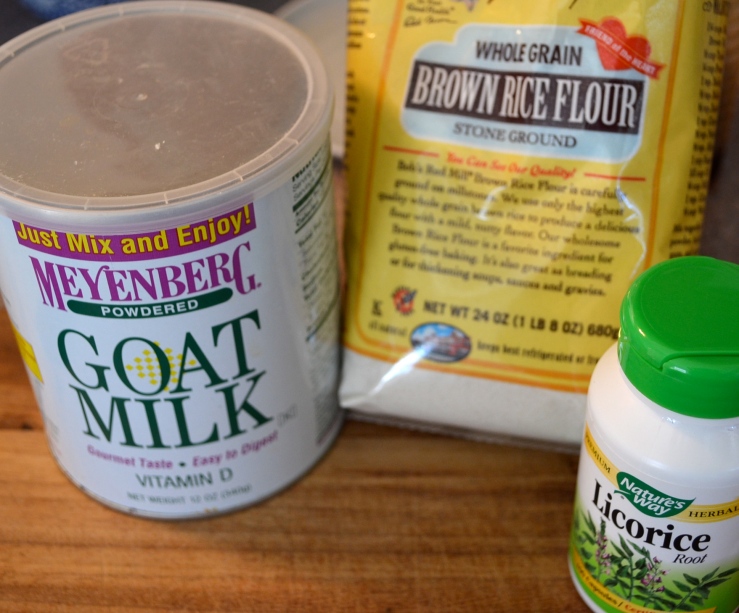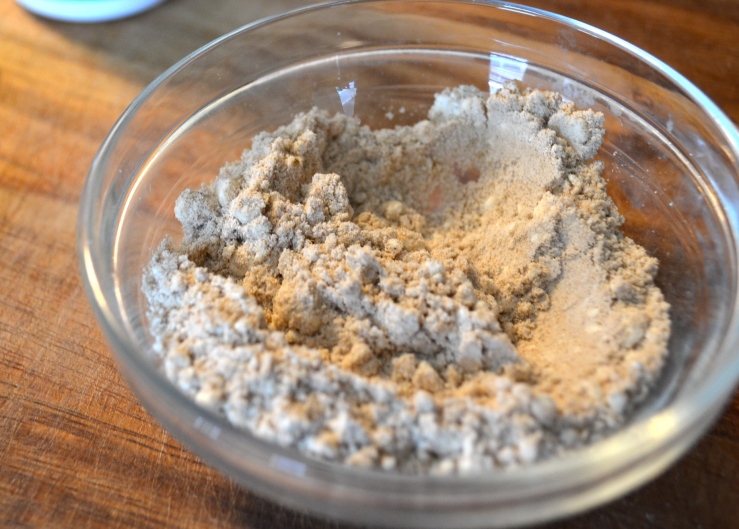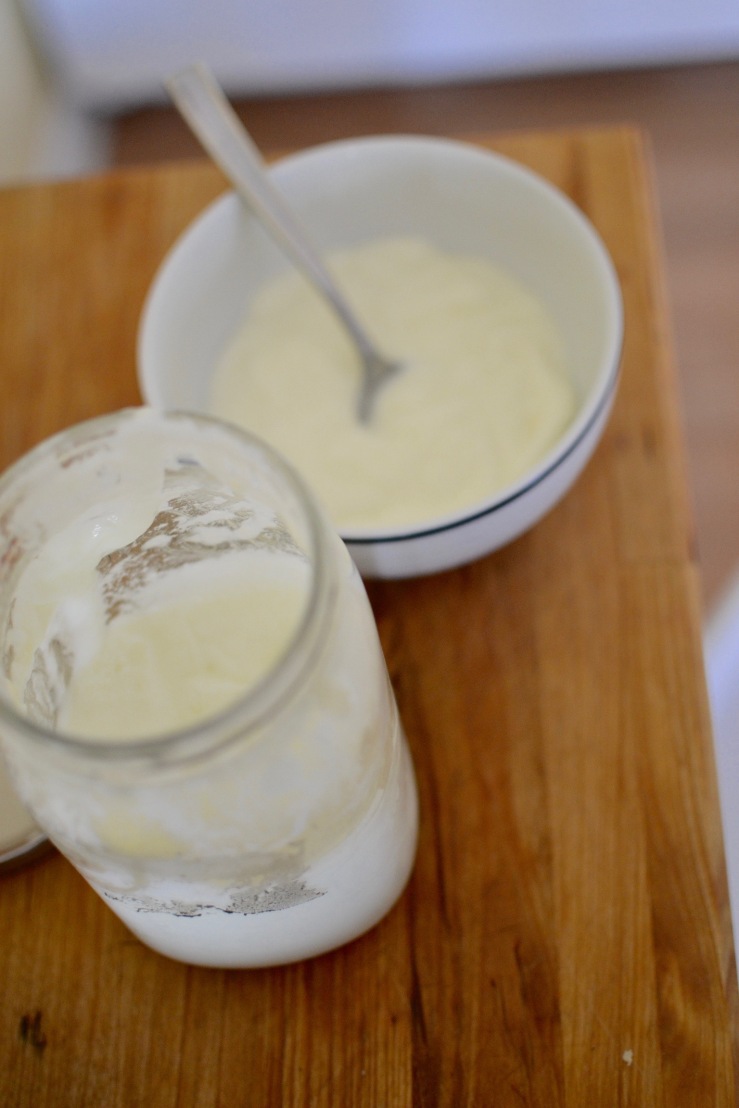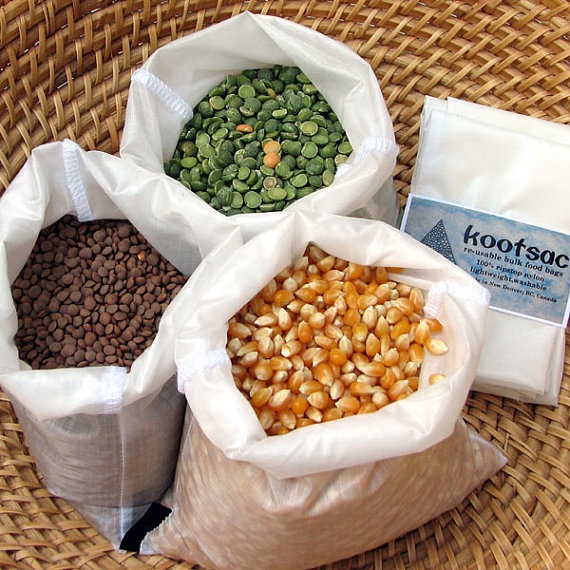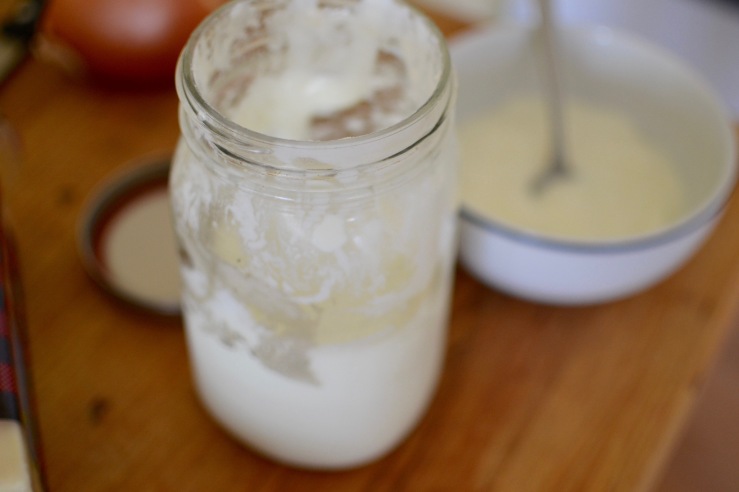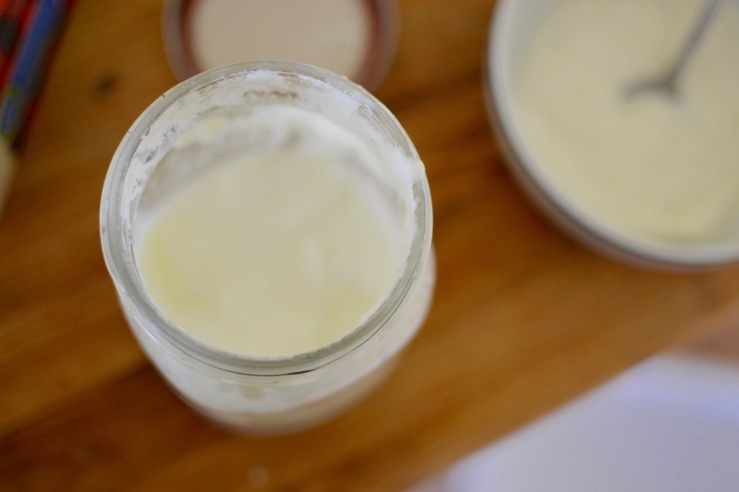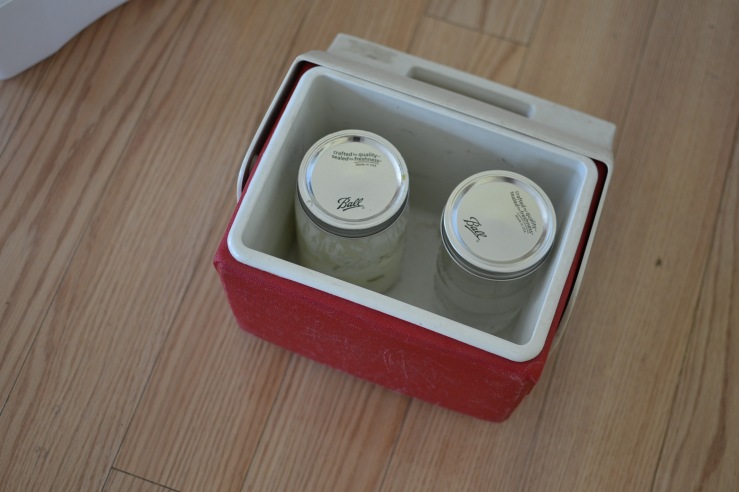 Words (or at least my words) cannot begin to express the rapturous joy with which we emerge from the bitter desolations of the subarctic winter and enter, with bare arms and faces pointed to the bright and finally warm sun, the glories of spring.
Words (or at least my words) cannot begin to express the rapturous joy with which we emerge from the bitter desolations of the subarctic winter and enter, with bare arms and faces pointed to the bright and finally warm sun, the glories of spring.
And what do we do in these precious days of warmth, me and little crew, but pack our bags in the morning with sunscreen, half a gallon or so of tick spray (a homemade concoction that includes citronella and geranium bourbon essential oils, hats, towels, extra clothes, water bottles, and enough food to count as lunch. Apples, bananas, pb&js, little pieces of salami, cashews, some type of chips if we have them on hand, etc. And we go out for as much or the morning as remains after I have packed all of our sundry things, and we have a picnic for lunch. Once we manage to leave the house and set forth, I feel like a combination of the 1994 movie version of Marianne Dashwood going out for a walk on a soon-to-be-stormy day and Fraulein Maria going out with the children in their curtain clothes, with baskets and guitar. See that look on her face? This is basically us:
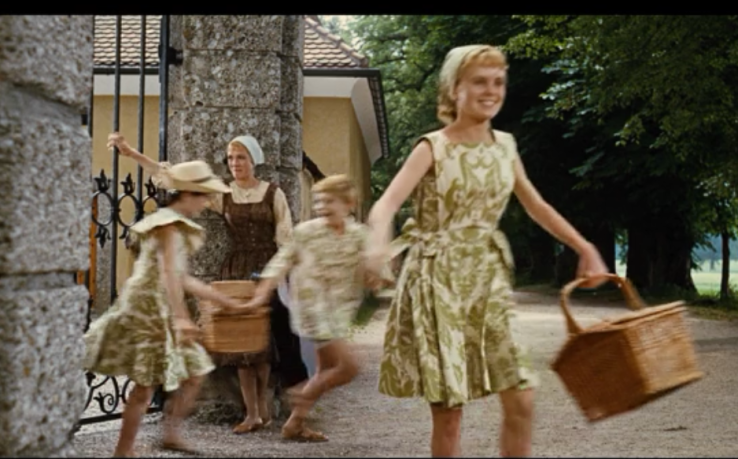
Anyway, whatever your days look like this summer, whether frolicking through the Alps or tumbling down rainy English slopes or perhaps just hiking on whatever paths might be free and not subject to the oppressive taxation of the State, I hope they involve some form of eating food outside.
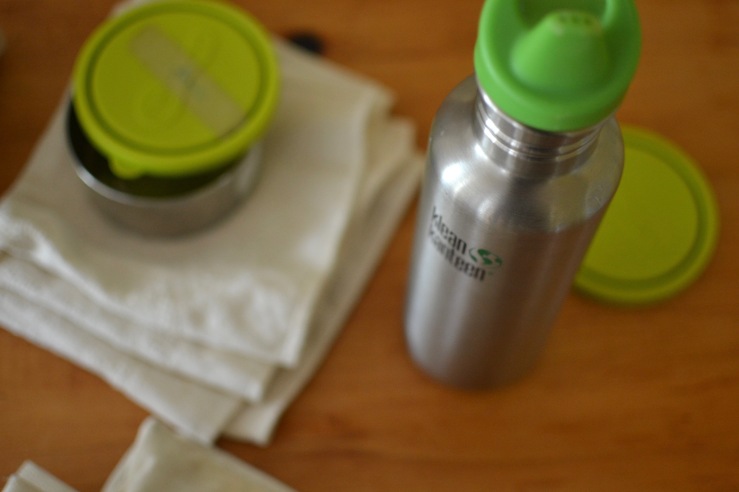
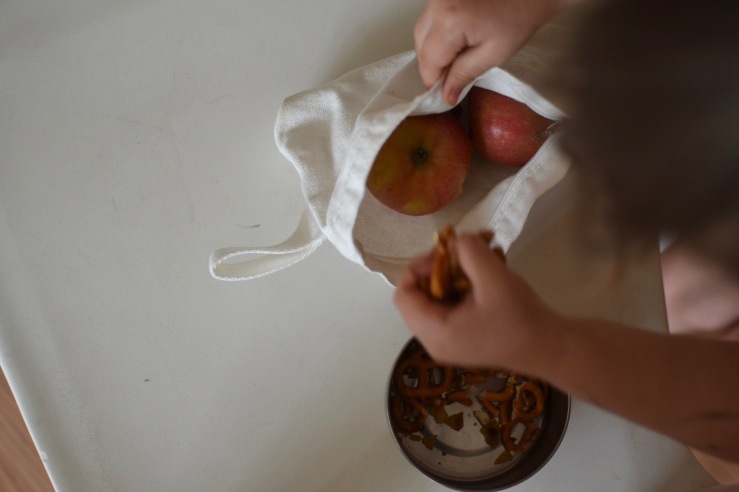
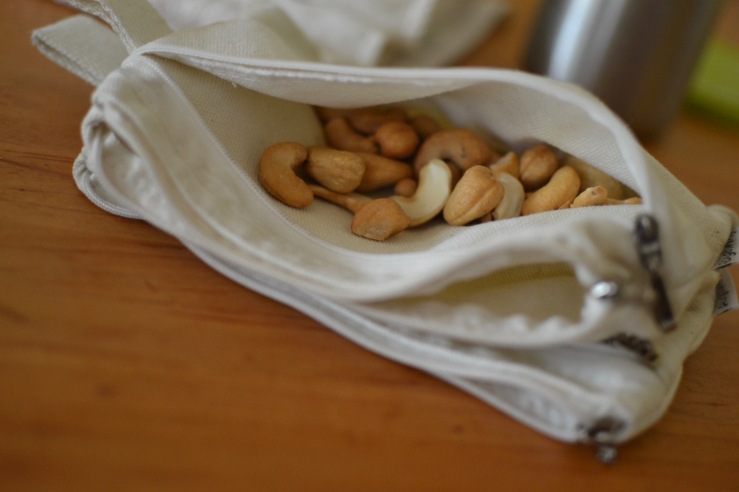
I’ve been trying to use as little plastic as possible for these excursions and for life in general otherwise, and I wanted to share a few of the things I’ve been using to pack food that don’t involve ziplock bags. I have neither time nor inclination to expound here all the various evils of plastic,* but suffice to say: it’s ugly** and it’s bad for us and every other living organism on the planet. So we pack up our little snack lunches in various cloth bags, metal tins, etc. Here’s what we use:
My top 4 Reusable Things for Picnics (and Snacks in General):
- Water bottles. We use these Kleen Kanteen ones for the kids, with these (somewhat leakproof) green lids. The kids each have one and only one, so we keep good track of them and they go everywhere with us. I have a stainless mug that I carry hot tea in on cold days and cold tea in on hot days.
- Cotton zippered pouches. The pouches made for snacks are expensive! And lined with plastic! But mostly, they’re expensive. So after wanting to buy snack pouches to replace small ziplock bags for about 2 years now I finally bought these little canvas bags. (They come in various sizes– one version we bought is smaller, and has 2 separate zippered pouches, and the larger size has a little loop that is nice for little hands to hold on to.) These are not waterproof, so you know, they’re not for yogurt or spaghetti and things like that, but we weren’t really using ziplock bags for those things too much anyway. They are great for grapes or pretzels or nuts and dried fruit, etc.*** Depending on the size, these cost $2-3 per pouch and come in sets of 4-6.
- Stainless steel containers of various sizes (similar to these) for stuff that might leak, and anything else, sandwiches (though we also put sandwiches in the cotton bags), leftovers for John to take to work, etc. We own four: 2 small circular ones, the large one shown in these pictures, and another one that’s about the size of a sandwich. (Here are some similar ones, with silicone lids.) They’re a small bit pricey– we’ve collected these four over the course of about a year, one at a time when they’ve gone on sale at Wegmans. I’m sure they’ll get lost at some point, but as with our stainless water bottles we make a point to keep track of them precisely because they cost a bit more, and it has never felt like a burden to do so.
- Cloth napkins. Buy fancy linen ones or find any old kind at the thrift store, or use cotton handkerchiefs. For wiping faces and hands and wrapping up a bundle of sandwiches, etc.
Before we had the pouches and the stainless steel containers I would wrap up our sandwiches and various things in cloth napkins or put them in some of our glass pyrex jars with lids. We generally pack finger foods so we don’t need utensils. I’m all about the cost effective fruit, so we mainly stick to apples and bananas. Little ball jars with lids would make a good and inexpensive snack container. We usually don’t take a cooler, but if we’re bringing meat or cheese or something and it’s particularly hot out we might.
(We also used, and still sometimes use, ziplock bags of various sizes, but I wash all of them, even the small ones and reuse them. Because, see below).

Anyway, I hope I haven’t been too preachy! Hoping, for us and for all two of you (hi mom and dad! I love you guys!), that this will be a spring and summer of picnics, mountain wandering, and Ivanhoe reading. And maybe a tiny bit less plastic.
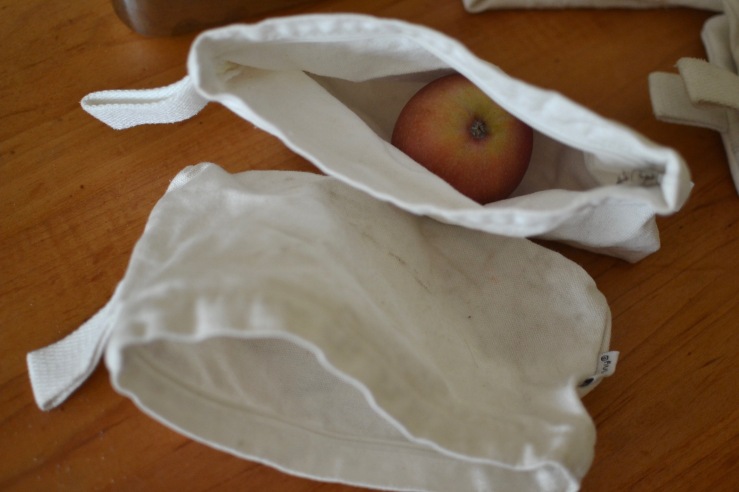
*i.e., the harm they do to animals, the harm they do to people, the fact that MOST OF IT NEVER GETS RECYCLED, or the fact that even if it DOES it takes an enormous amount of energy and creates an enormous amount of pollution to do so, and even when recycled, the fact remains that it’s still plastic, it still exists, and all that will happen to it is possibly be used for a period of time by people and then ultimately break or be broken down in some form, over some time period, into invisible molecules of plastic. Also, please consider the human beings who work in plastic factories. Can you imagine spending most of your waking hours in a ziplock bag factory, breathing in the fumes of melted plastic? Living next door to such a factory? Is it morally acceptable for us to use these things while other people are breathing in those fumes all day, every day? Just so that we can continue to bustle about in our frantic lives at faster and faster paces, tossing food into ziplock bags?
**If you’re not convinced by the envorinomental/human health arguments about plastic, please consider the aesthetic elements of it. We are affected and shaped by the things that surround us, at least to some extent, and if we learn from earliest infancy**** that food comes primarily out of plastic pouches or tucked in plastic bags, what does it teach us about the purpose and quality of food, about nourishment, both to body and soul, and about how we interact with the world around us? The latter part of that question, I fear, is becoming answered increasingly with choices of convenience and cheapness, reflecting that at heart, we care neither for the consequences upstream of our ziplock bags (what about the people who work in the factories who produce them; or downstream, after the plastic has served its fleeting purpose and we have thrown it into the trash, and our ziplock bags and baby food pouches and squeezable yogurts and coffee cups come to visit us and our children and our children’s children in the form of microscopically small particles of plastic in our water and all of our food.)
*** And yes, most of these foods come packaged in plastic. I know. I try to buy as much as I can from bulk bins, but many things are sadly more expensive to buy that way….. Perhaps more soon about my paltry attempts to make good choices on a tight budget in the grocery store.
**** This is going to sound really aggressive, but y’all it is possible to feed babies otherwise than out of plastic pouches. I fed two just fine with zero of them. Plastic is not healthy for us, and just because companies put baby food into it doesn’t mean that it’s safe and healthy for your baby to eat it. Even if the food inside the pouch is organic, it is now organic food with plenty of leeched plastic in it. If plastic food pouches are your deal and it’s how you survive, then keep on with it, sister. I have used and still use plenty of plastic other areas. But astonishingly, miraculously, human babies have managed to be fed throughout, and even to survive, their infancy without such contrivances for millennia. But then, people also have managed to survive without cars, coffee, bathtubs, electricity, seltzer water, libraries, etc.., and I use those things plus others quite liberally. And most of the food I buy comes in plastic, even though I make every effort not to.
So anyway. here’s to muddling through, doing what we can do do whatever we’re doing. And here’s to picnics and summer, whatever the food might be packaged in. (Just this very day– this is a few days after I wrote this post originally, because of course I felt the need to edit it extensively– I took Margaret out to a park and she had a little snack bag of freeze dried strawberries from Aldi, so in essence no different than pouches, and if I calculated the price per pound of it it would cost more than gold. So much for all of my preaching about plastic and frugality.)

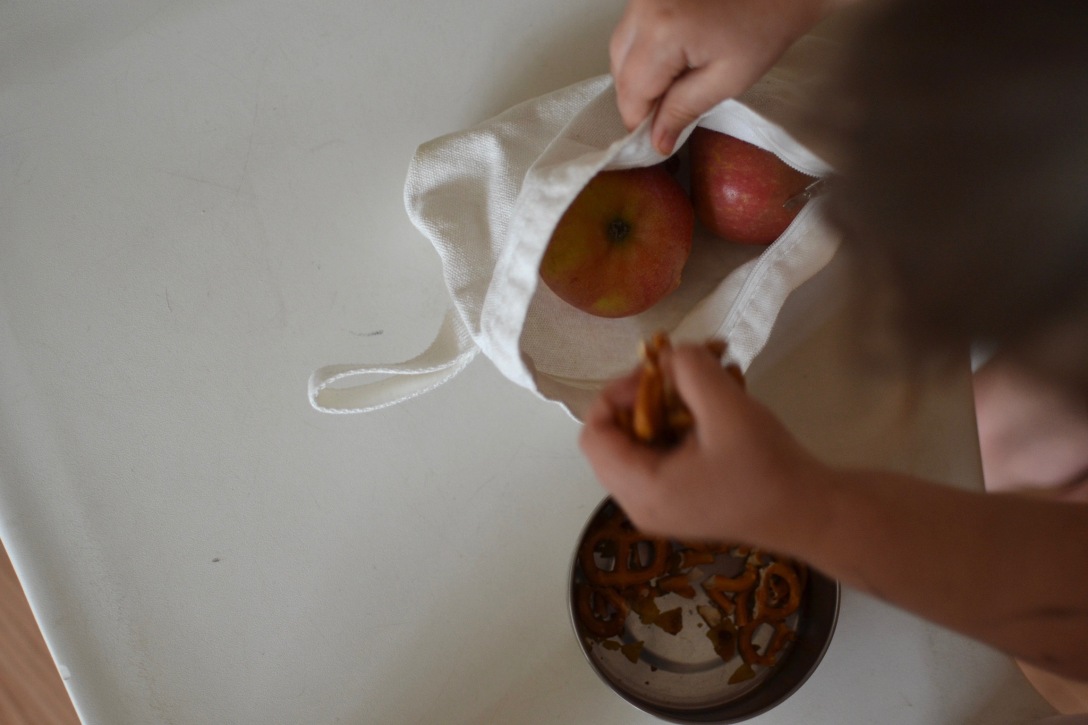

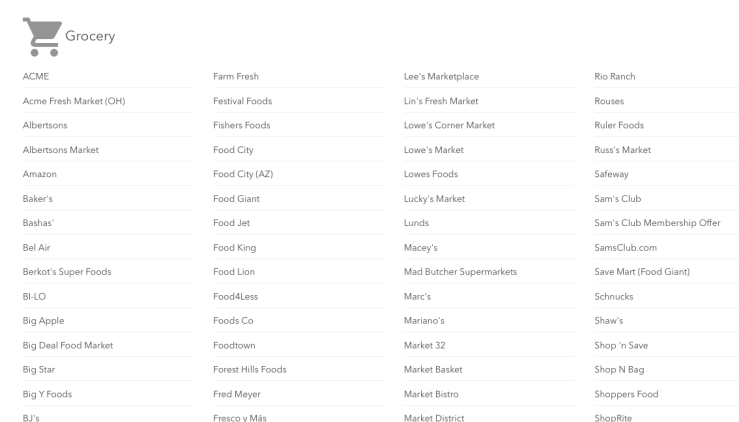

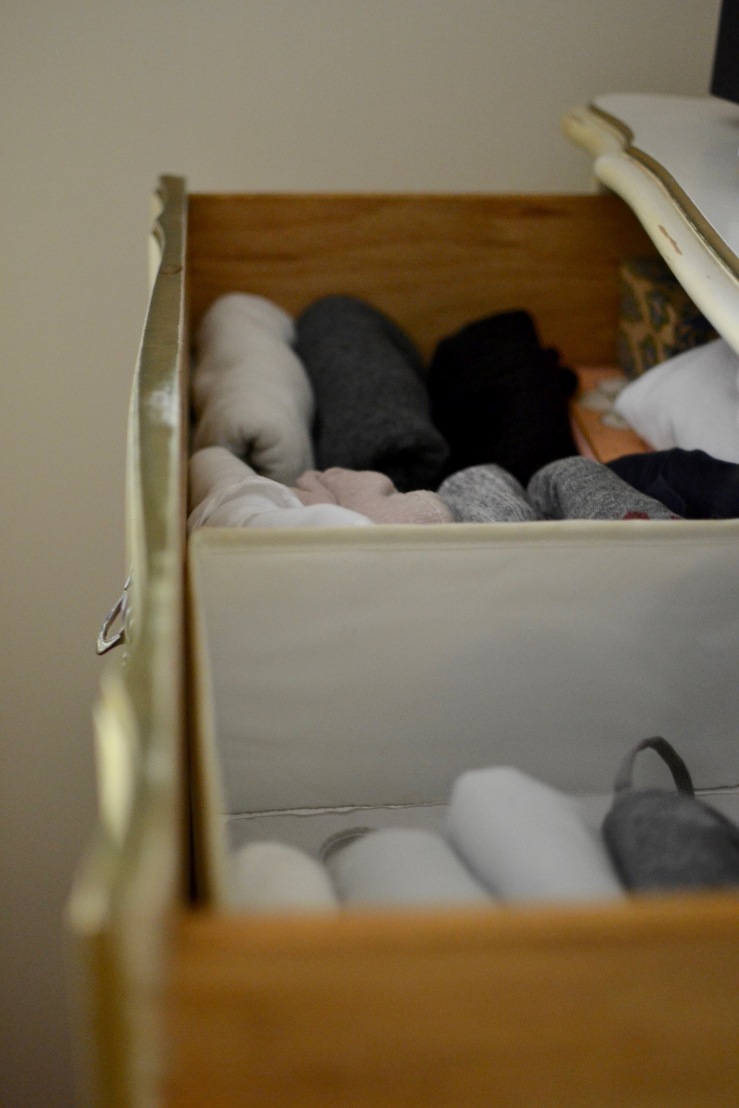

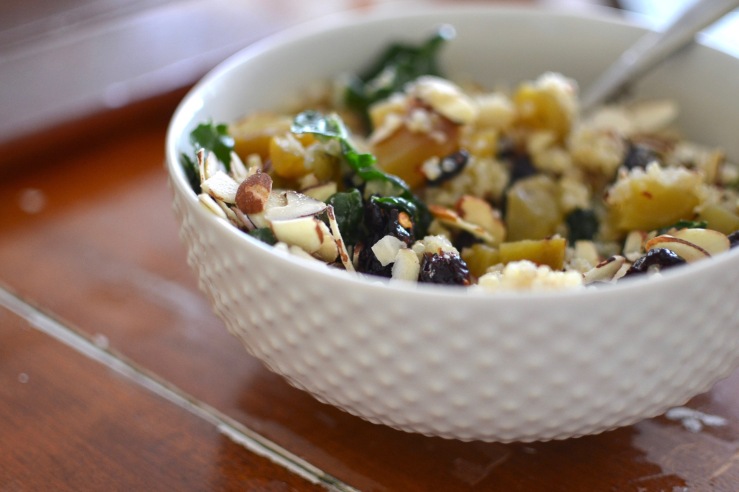
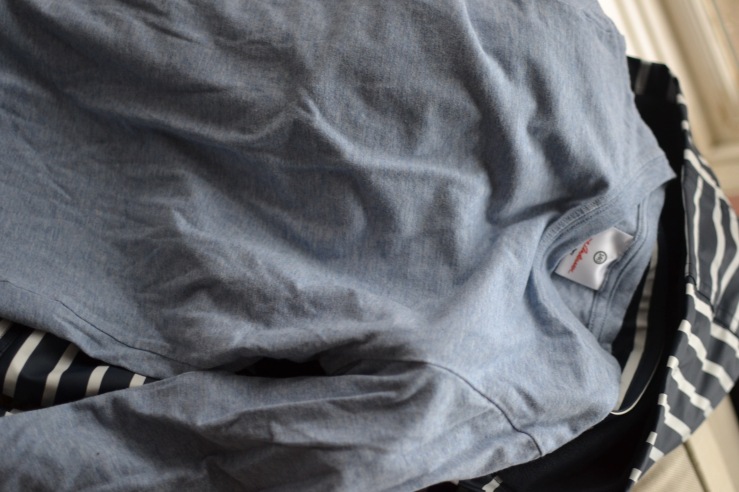
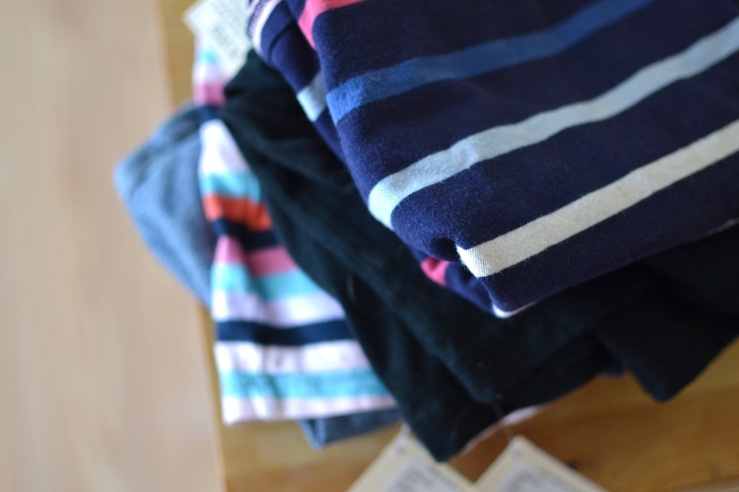 Guys, I’m just going to be really honest. I’m way more persnickety about children’s clothes than is befitting of someone in our income bracket. I like for my children to be dressed, at all possible, in wool, linen, and organic cotton items of navy, white, black, gray, and red, that are handmade in France. However, I also have approximately a $0 budget for clothes for myself and the children, and while I occasionally exceed that budget by a bit, I can say that I have bought fewer than 5 brand new items for each of my children since they’ve been born (they’re 2.5 and 4.5 right now), other than some socks and, as Will has gotten older and shoes are harder to find, a couple of pairs of shoes. Everything else has been hand-me downs, or thrift/consignment finds, with a few things bought used on eBay or ThredUp. I’m not saying that to brag at all, because it would be quite possible to spend a ton of money only buying secondhand things, but just that it IS possible to dress children decently without buying a ton of new things.
Guys, I’m just going to be really honest. I’m way more persnickety about children’s clothes than is befitting of someone in our income bracket. I like for my children to be dressed, at all possible, in wool, linen, and organic cotton items of navy, white, black, gray, and red, that are handmade in France. However, I also have approximately a $0 budget for clothes for myself and the children, and while I occasionally exceed that budget by a bit, I can say that I have bought fewer than 5 brand new items for each of my children since they’ve been born (they’re 2.5 and 4.5 right now), other than some socks and, as Will has gotten older and shoes are harder to find, a couple of pairs of shoes. Everything else has been hand-me downs, or thrift/consignment finds, with a few things bought used on eBay or ThredUp. I’m not saying that to brag at all, because it would be quite possible to spend a ton of money only buying secondhand things, but just that it IS possible to dress children decently without buying a ton of new things.